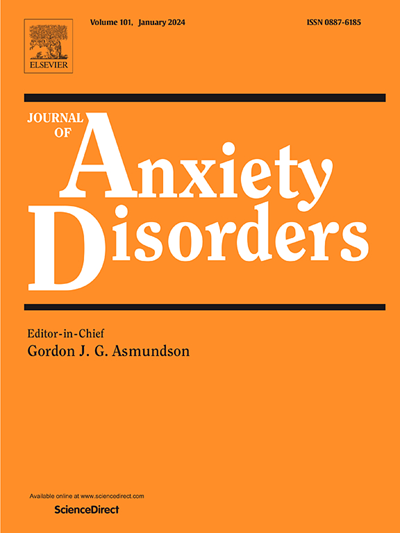Interplay of serum BDNF levels and childhood adversity in predicting earlier-onset post-traumatic stress disorder: A two-year longitudinal study
IF 4.5
2区 医学
Q1 PSYCHIATRY
引用次数: 0
Abstract
This longitudinal study explored the intricate relationships between serum Brain-Derived Neurotrophic Factor (sBDNF) levels, exposure to childhood adversities, and the subsequent development of Post-Traumatic Stress Disorder (PTSD), distinguishing between earlier- and delayed-onset forms over a two-year follow-up period in individuals sustaining physical injuries. We recruited patients presenting with moderate to severe physical injuries at a trauma center, conducting baseline assessments of sBDNF levels and childhood adversities through the Adverse Childhood Experiences (ACE) questionnaire. Additionally, detailed socio-demographic and clinical data were compiled. The Clinician-Administered PTSD Scale for DSM-5 was employed to diagnose PTSD at 3, 6, 12, and 24 months post-injury. Binary and multinomial logistic regression analyses were applied to elucidate the interactions between sBDNF levels, childhood adversities, and PTSD onset patterns. Among 895 participants, PTSD was diagnosed in 107 individuals (11.9 %), with 76 (8.4 %) exhibiting symptoms indicative of earlier-onset PTSD and 31 (3.5 %) demonstrating delayed-onset PTSD. Significantly, lower sBDNF levels were associated with a higher risk of earlier-onset PTSD specifically in the context of childhood adversities. This association was not observed in individuals without childhood adversities or in those with delayed-onset PTSD. The findings suggest a complex and critical interplay between neurobiological factors, specifically sBDNF levels, and early life adversities in influencing the timing of PTSD onset, potentially deepening the understanding of PTSD etiology.
血清 BDNF 水平和童年逆境在预测早期创伤后应激障碍方面的相互作用:一项为期两年的纵向研究。
这项纵向研究探讨了血清脑源性神经营养因子(sBDNF)水平、童年逆境经历与创伤后应激障碍(PTSD)后续发展之间错综复杂的关系,并在两年的随访期内对肢体损伤患者的早期和延迟发病形式进行了区分。我们在一家创伤中心招募了中度至重度肢体损伤患者,通过童年逆境经历(ACE)问卷对他们的sBDNF水平和童年逆境经历进行了基线评估。此外,还收集了详细的社会人口学和临床数据。在受伤后 3、6、12 和 24 个月时,采用 DSM-5 临床医师管理创伤后应激障碍量表诊断创伤后应激障碍。应用二元和多叉逻辑回归分析来阐明 sBDNF 水平、童年逆境和创伤后应激障碍发病模式之间的相互作用。在 895 名参与者中,有 107 人(11.9%)被诊断为创伤后应激障碍,其中 76 人(8.4%)表现出较早发病的创伤后应激障碍症状,31 人(3.5%)表现出延迟发病的创伤后应激障碍症状。值得注意的是,较低的sBDNF水平与较高的早发性创伤后应激障碍风险有关,特别是在童年逆境中。而在没有童年逆境的人或延迟发病的创伤后应激障碍患者中,则没有观察到这种关联。研究结果表明,神经生物学因素(特别是sBDNF水平)与早期生活逆境之间存在着复杂而关键的相互作用,影响着创伤后应激障碍的发病时间,从而有可能加深对创伤后应激障碍病因的理解。
本文章由计算机程序翻译,如有差异,请以英文原文为准。
求助全文
约1分钟内获得全文
求助全文
来源期刊

Journal of Anxiety Disorders
Multiple-
CiteScore
16.60
自引率
2.90%
发文量
95
期刊介绍:
The Journal of Anxiety Disorders is an interdisciplinary journal that publishes research papers on all aspects of anxiety disorders for individuals of all age groups, including children, adolescents, adults, and the elderly. Manuscripts that focus on disorders previously classified as anxiety disorders such as obsessive-compulsive disorder and posttraumatic stress disorder, as well as the new category of illness anxiety disorder, are also within the scope of the journal. The research areas of focus include traditional, behavioral, cognitive, and biological assessment; diagnosis and classification; psychosocial and psychopharmacological treatment; genetics; epidemiology; and prevention. The journal welcomes theoretical and review articles that significantly contribute to current knowledge in the field. It is abstracted and indexed in various databases such as Elsevier, BIOBASE, PubMed/Medline, PsycINFO, BIOSIS Citation Index, BRS Data, Current Contents - Social & Behavioral Sciences, Pascal Francis, Scopus, and Google Scholar.
 求助内容:
求助内容: 应助结果提醒方式:
应助结果提醒方式:


